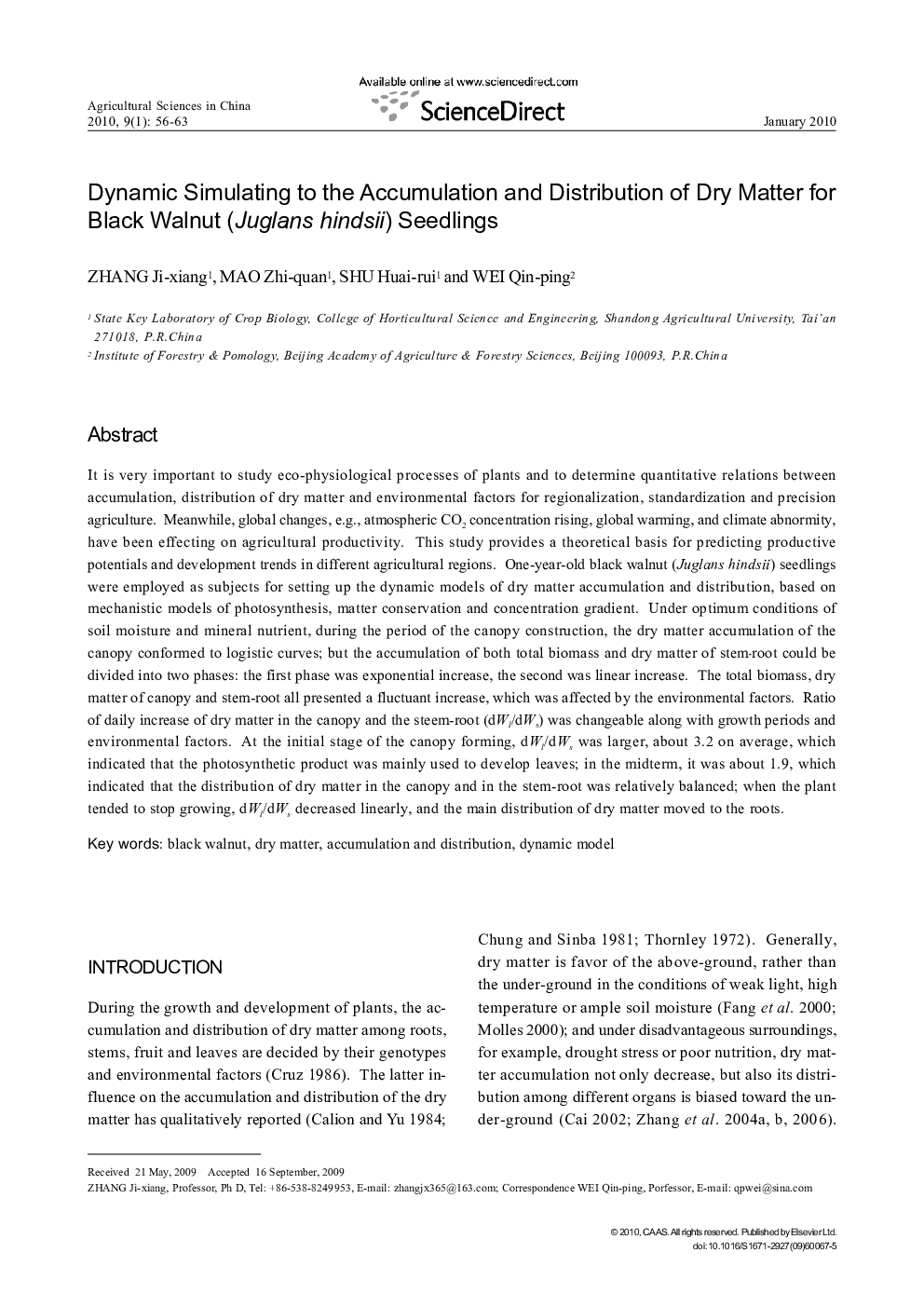| Article ID | Journal | Published Year | Pages | File Type |
|---|---|---|---|---|
| 4490273 | Agricultural Sciences in China | 2010 | 8 Pages |
It is very important to study eco-physiological processes of plants and to determine quantitative relations between accumulation, distribution of dry matter and environmental factors for regionalization, standardization and precision agriculture. Meanwhile, global changes, e.g., atmospheric CO2 concentration rising, global warming, and climate abnormity, have been effecting on agricultural productivity. This study provides a theoretical basis for predicting productive potentials and development trends in different agricultural regions. One-year-old black walnut (Juglans hindsii) seedlings were employed as subjects for setting up the dynamic models of dry matter accumulation and distribution, based on mechanistic models of photosynthesis, matter conservation and concentration gradient. Under optimum conditions of soil moisture and mineral nutrient, during the period of the canopy construction, the dry matter accumulation of the canopy conformed to logistic curves; but the accumulation of both total biomass and dry matter of stem-root could be divided into two phases: the first phase was exponential increase, the second was linear increase. The total biomass, dry matter of canopy and stem-root all presented a fluctuant increase, which was affected by the environmental factors. Ratio of daily increase of dry matter in the canopy and the steem-root (dWl/dWs) was changeable along with growth periods and environmental factors. At the initial stage of the canopy forming, dWl/dWs was larger, about 3.2 on average, which indicated that the photosynthetic product was mainly used to develop leaves; in the midterm, it was about 1.9, which indicated that the distribution of dry matter in the canopy and in the stem-root was relatively balanced; when the plant tended to stop growing, dWl/dWs decreased linearly, and the main distribution of dry matter moved to the roots.
